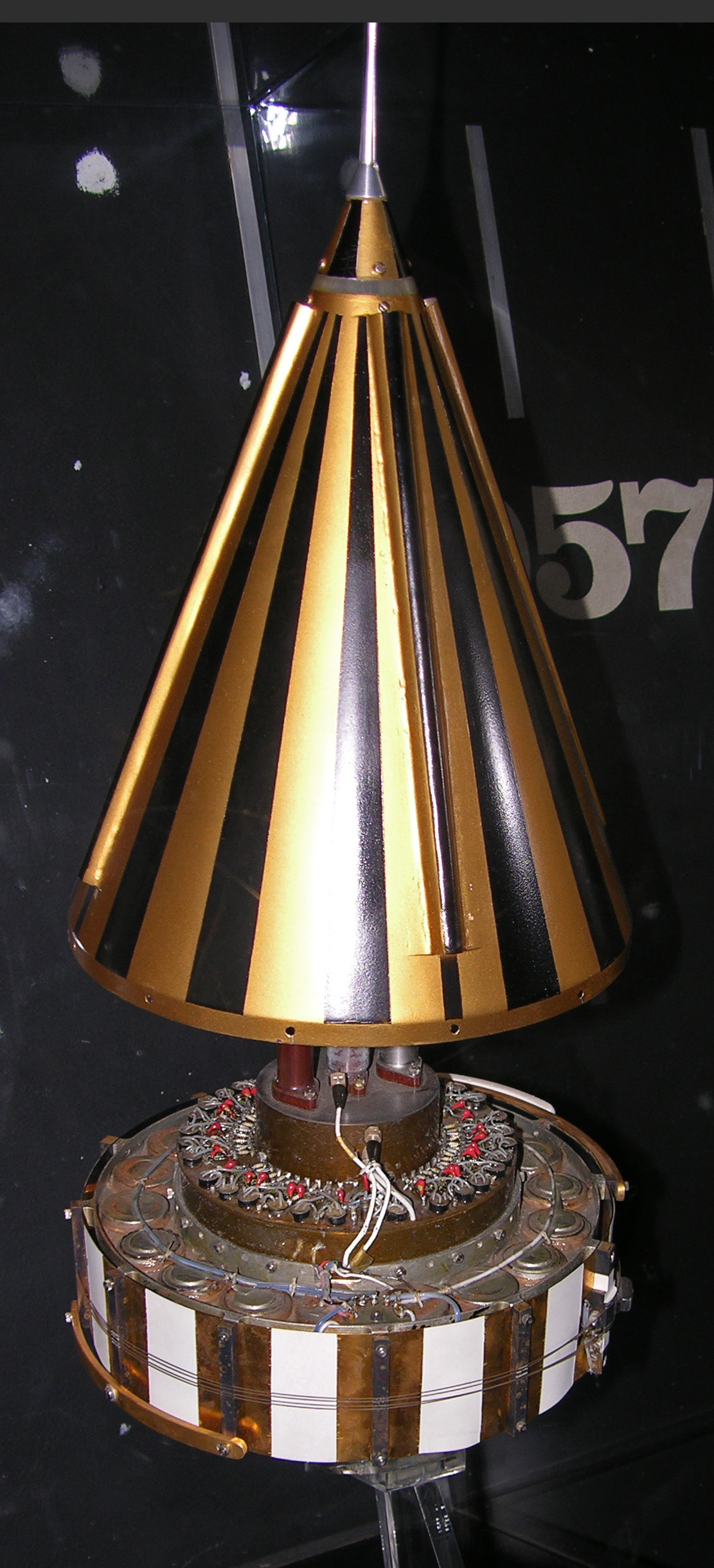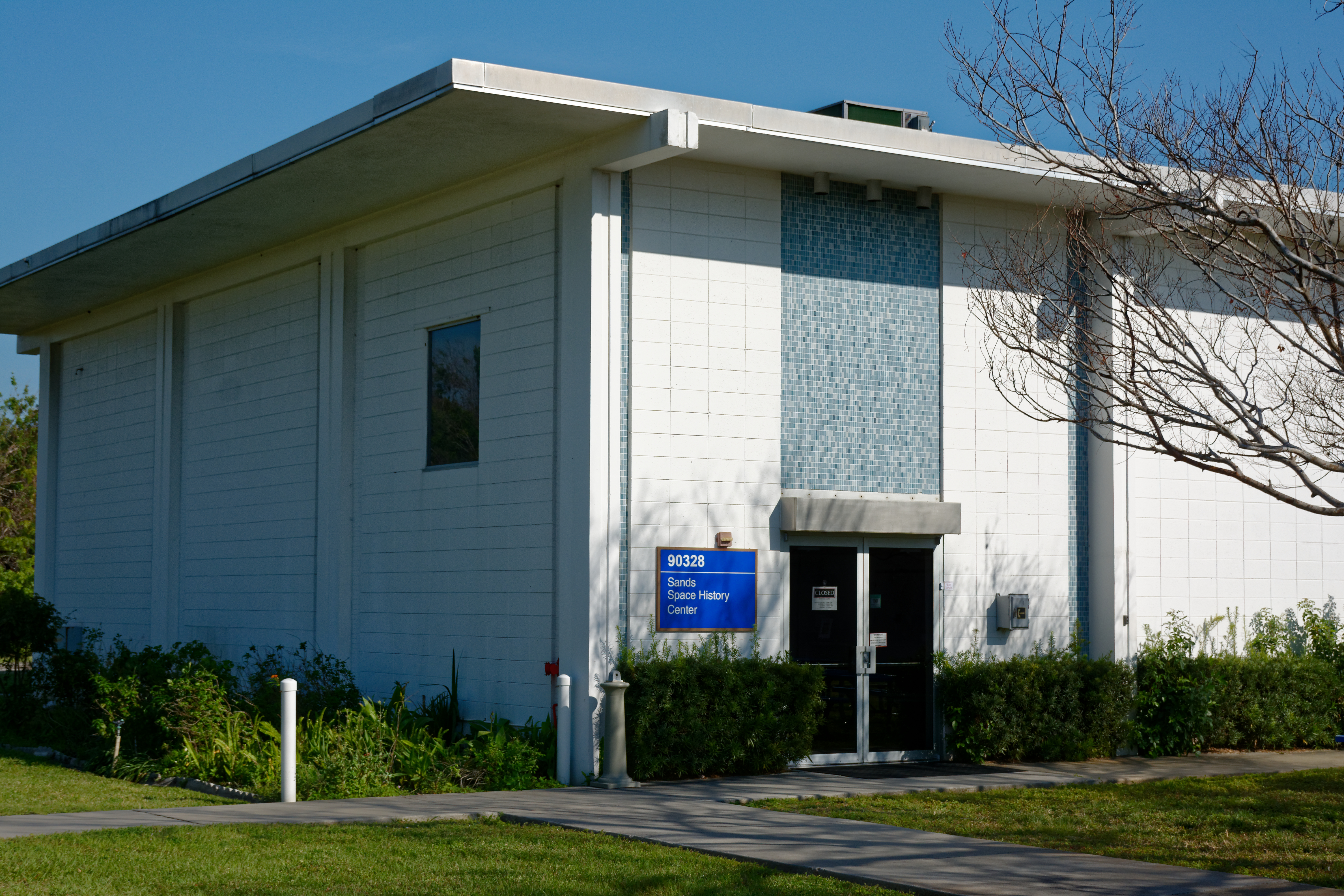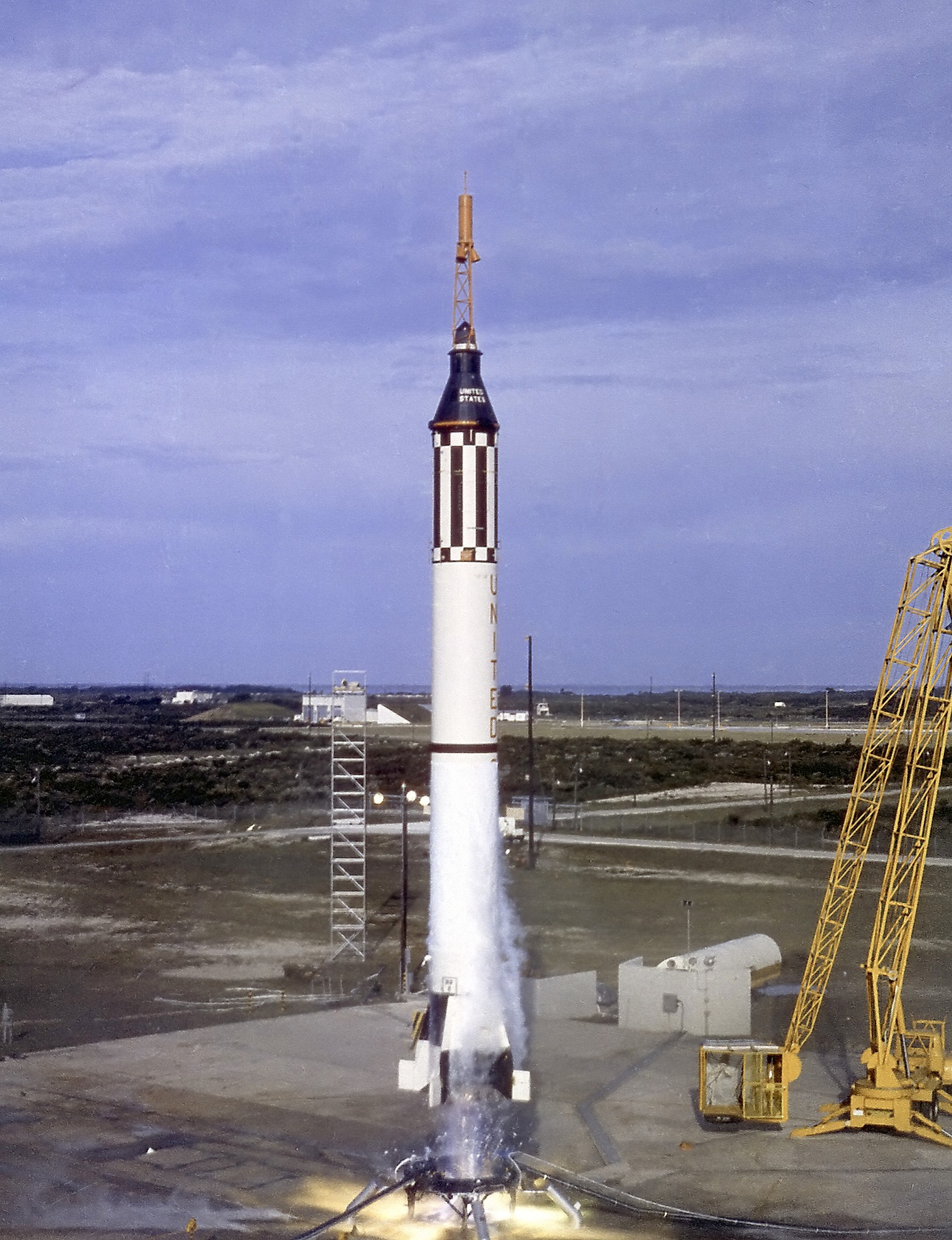|
Cape Canaveral Launch Complex 5
Cape Canaveral Launch Complex 5 (LC-5) was a launch site at Cape Canaveral Space Force Station, Florida used for various Redstone and Jupiter launches. It is most well known as the launch site for NASA's 1961 suborbital Mercury-Redstone 3 flight, which made Alan Shepard the first American in space. It was also the launch site of Gus Grissom's July, 1961, Mercury-Redstone 4 flight. The Mercury-Redstone 1 pad abort, Mercury-Redstone 1A, and the January, 1961, Mercury-Redstone 2 with a chimpanzee, Ham, aboard, also used LC-5. A total of 23 launches were conducted from LC-5: one Jupiter-A, six Jupiter IRBMs, one Jupiter-C, four Juno Is, four Juno IIs and seven Redstones. The first launch from the complex was a Jupiter-A on July 19, 1956 and the final launch was Gus Grissom's ''Liberty Bell 7'' capsule on July 21, 1961. LC-5 is located next to the Air Force Space and Missile Museum which is located at LC-26. The original launch consoles and computers are on display in the LC-5 blockh ... [...More Info...] [...Related Items...] OR: [Wikipedia] [Google] [Baidu] |
Mercury-Redstone 1
Mercury-Redstone 1 (MR-1) was the first Mercury-Redstone uncrewed flight test in Project Mercury and the first attempt to launch a Mercury spacecraft with the Mercury-Redstone Launch Vehicle. Intended to be an uncrewed sub-orbital spaceflight, it was launched on November 21, 1960 from Cape Canaveral Air Force Station, Florida. The launch failed in abnormal fashion: immediately after the Mercury-Redstone rocket started to move, it shut itself down and settled back on the pad, after which the capsule jettisoned its escape rocket and deployed its recovery parachutes. The failure has been referred to as the "four-inch flight", for the approximate distance traveled by the launch vehicle. Test background and launch failure The purpose of the MR-1 flight was to qualify the Mercury spacecraft and the Mercury-Redstone launch vehicle for the sub-orbital Mercury mission. It would also qualify the spacecraft's automated flight control and recovery systems, as well as the launch, tracking, a ... [...More Info...] [...Related Items...] OR: [Wikipedia] [Google] [Baidu] |
Mercury-Redstone 1A
Mercury- Redstone 1A (MR-1A) was launched on December 19, 1960 from LC-5 at Cape Canaveral, Florida. The mission objectives of this uncrewed suborbital flight were to qualify the spacecraft for space flight and qualify the system for an upcoming primate suborbital flight. The spacecraft tested its instrumentation, posigrade rockets, retrorockets and recovery system. The mission was completely successful. The Mercury capsule reached an altitude of and a range of . The launch vehicle reached a slightly higher velocity than expected - . The Mercury spacecraft was recovered from the Atlantic Ocean by recovery helicopters about 15 minutes after landing. Serial numbers: Mercury Spacecraft #2 was reflown on MR-1A, together with the escape tower from Capsule #8 and the antenna fairing from Capsule #10. Redstone MRLV-3 was used. The flight time was 15 minutes and 45 seconds. Mercury-Redstone suborbital flight events Current location Mercury spacecraft #2, used in both the Mercury-Reds ... [...More Info...] [...Related Items...] OR: [Wikipedia] [Google] [Baidu] |
Explorer 7
Explorer 7 was a NASA satellite launched on 13 October 1959, at 15:30:04 GMT, by a Juno II launch vehicle from Cape Canaveral Air Force Station (CCAFS) to an orbit of and inclination of 50.27°. It was designed to measure solar X-ray and Lyman-alpha flux, trapped energetic particles, and heavy primary cosmic rays. Secondary objectives included collecting data on micrometeoroid penetration, molecular sputtering and studying the Earth-atmosphere heat balance. Satellite description The spin-stabilized satellite's external structure consisted of two truncated conical fiberglass shells joined by a cylindrical aluminum center section. The spacecraft was wide at its equator and about high with a payload mass of about . The spacecraft was powered by approximately 3000 solar cells mounted on both the upper and lower shells. Additional power was provided by 15 rechargeable nickel-cadmium batteries that were positioned on its equator near the outer skin as an aid in maintaini ... [...More Info...] [...Related Items...] OR: [Wikipedia] [Google] [Baidu] |
Pioneer 4
Pioneer 4 was an American spin-stabilized uncrewed spacecraft launched as part of the Pioneer program on a lunar flyby trajectory and into a heliocentric orbit making it the first probe of the United States to escape from the Earth's gravity. It carried a payload similar to ''Pioneer 3'': a lunar radiation environment experiment using a Geiger–Müller tube detector and a lunar photography experiment. It passed within 58,983 km of the Moon's surface. However, ''Pioneer 4'' did not come close enough to trigger its photoelectric sensor. The spacecraft was still in solar orbit as of 1969. It was the only successful lunar probe launched by the U.S. in 12 attempts between 1958 and 1963; only in 1964 would Ranger 7 surpass its success by accomplishing all of its mission objectives. After the Soviet Luna 1 probe conducted the first successful flyby of the Moon on 3 January 1959, the pressure felt by the US to succeed with a lunar mission was enormous, especially since American ... [...More Info...] [...Related Items...] OR: [Wikipedia] [Google] [Baidu] |
Pioneer 3
Pioneer 3 was a spin-stabilized spacecraft launched at 05:45:12 GMT on 6 December 1958 by the U.S. Army Ballistic Missile Agency in conjunction with the NASA, using a Juno II rocket. This spacecraft was intended as a lunar probe, but failed to go past the Moon and into a heliocentric orbit as planned. It did however reach an altitude of 102,360 km before falling back to Earth. The revised spacecraft objectives were to measure radiation in the outer Van Allen radiation belt using two Geiger-Müller tubes and to test the trigger mechanism for a lunar photographic experiment. Spacecraft design Pioneer 3 was a cone-shaped probe 58 cm high and 25 cm diameter at its base. The cone was composed of a thin fiberglass shell coated with a gold wash to make it electrically conducting and painted with black and white stripes to maintain the temperature between 10 and 50 °C. At the tip of the cone was a small probe which combined with the cone itself to act as an antenna. ... [...More Info...] [...Related Items...] OR: [Wikipedia] [Google] [Baidu] |
Explorer 5
Explorer 5 was a United States satellite with a mass of . It was the last of the original series of Explorer satellites built, designed, and operated by the Jet Propulsion Laboratory. Background Explorer 5 was similar in all respects to Explorer 4 and was designed with the same basic science objectives, to make the first detailed measurements of charged particles (protons and electrons) trapped in the terrestrial radiation belts and to observe the effects of the Project Argus A-bomb detonations. Spacecraft and subsystems Explorer 5 was a long, diameter cylinder and nosecone that comprised the fourth stage of the Jupiter-C launch vehicle. The on-orbit mass (after fuel burnout) was . The spacecraft body was made of stainless AISI-410 steel, thick. The surface was sandblasted, no aluminum oxide striping was used as on earlier Explorer satellites. The base of the cylinder held the Sergeant solid-fuel rocket motor. The Mallory mercury batteries for the low power transmi ... [...More Info...] [...Related Items...] OR: [Wikipedia] [Google] [Baidu] |
Explorer 4
Explorer 4 was an American satellite launched on 26 July 1958. It was instrumented by Dr. James van Allen's group. The Department of Defense's Advanced Research Projects Agency (ARPA) had initially planned two satellites for the purposes of studying the Van Allen radiation belts and the effects of nuclear explosions upon these belts (and the Earth's magnetosphere in general), however Explorer 4 was the only such satellite launched as the other, Explorer 5, suffered launch failure. Explorer 4 was a cylindrically shaped satellite instrumented to make the first detailed measurements of charged particles (protons and electrons) trapped in the terrestrial radiation belts. Juno I launch vehicle The launch vehicle was a Juno I, a variant of the three-stage Jupiter-C with an added fourth propulsive stage, which in this case was the Explorer 4. The first stage was an upgraded Redstone liquid-fueled rocket. The second stage comprised a cluster of eleven Sergeant solid-fuel rocket mot ... [...More Info...] [...Related Items...] OR: [Wikipedia] [Google] [Baidu] |
Explorer 3
Explorer 3 (Harvard designation 1958 Gamma) was an American artificial satellite launched into medium Earth orbit in 1958. It was the second successful launch in the Explorer program, and was nearly identical to the first U.S. satellite Explorer 1 in its design and mission. Background The U.S. Earth satellite program began in 1954 as a joint U.S. Army and U.S. Navy proposal, called Project Orbiter, to put a scientific satellite into orbit during the International Geophysical Year (IGY). The proposal, using a U.S. Army Redstone missile, was rejected in 1955 by the Eisenhower administration in favor of the U.S. Navy's Project Vanguard, using a booster advertised as more civilian in nature. Following the launch of the Soviet satellite Sputnik 1 on 4 October 1957, the initial Project Orbiter program was revived as the Explorer program to catch up with the Soviet Union. Launch The satellite was launched from Cape Canaveral Missile Test Center of the Atlantic Missile Range (AMR), ... [...More Info...] [...Related Items...] OR: [Wikipedia] [Google] [Baidu] |
Kennedy Space Center Visitor Complex
The Kennedy Space Center Visitor Complex is the visitor center at NASA's Kennedy Space Center on Merritt Island, Florida. It features exhibits and displays, historic spacecraft and memorabilia, shows, two IMAX theaters, and a range of bus tours of the spaceport. The "Space Shuttle ''Atlantis''" exhibit contains the ''Atlantis'' orbiter and the Shuttle Launch Experience, a simulated ride into space. The center also provides astronaut training experiences, including a multi-axial chair and Mars Base simulator. The visitor complex also has daily presentations from a veteran NASA astronaut. A bus tour, included with admission, encompasses the separate Apollo/Saturn V Center. There were 1.7 million visitors to the visitor complex in 2016. History The complex had its beginning in 1963 when NASA Administrator James Webb established self-guided tours where the public could drive along a predetermined route through the Cape Canaveral Air Force Station and a small trailer containing ... [...More Info...] [...Related Items...] OR: [Wikipedia] [Google] [Baidu] |
Cape Canaveral Air Force Station Launch Complex 26
Blockhouse of LC-26 Launch Complex 26 (LC-26) is a deactivated launch site at Cape Canaveral Space Force Station, Florida. LC-26 consisted of two pads, ''A'' and ''B''. Pad A was used for the Jupiter-C and Juno I rockets, and was the launch site for '' Explorer 1'', the United States' first satellite, in 1958. Pad B was used for Juno II. Jupiter IRBMs were launched from both pads. On February 1, 1958 (January 31 local time), the US Army Ballistic Missile Agency launched '' Explorer 1'' from LC-26A. LC-26 is also the home of the Air Force Space and Missile Museum. Access to the museum at LC-26 as well as the adjoining LC-5 and LC-6 by the general public can be arranged through the Kennedy Space Center Visitor Center "Cape Canaveral Early Space Tour". The Cape Canaveral Space Force Station also offers monthly tours. See also * List of Cape Canaveral and Merritt Island launch sites * Jupiter IRBM * Jupiter-C The Jupiter-C was an American research and development vehicl ... [...More Info...] [...Related Items...] OR: [Wikipedia] [Google] [Baidu] |
Air Force Space And Missile Museum
The Air Force Space and Missile Museum is located at Launch Complex 26 at Cape Canaveral Space Force Station, Florida. It includes artifacts from the early American space program and includes an outdoor area displaying rockets, missiles, and space-related equipment chronicling the space and missile history of the US Air Force, the US Space Force and other military branches. The museum is accessible to the public as a part of the "Cape Canaveral Early Space Tour" offered by the Kennedy Space Center Visitor Complex four days per week. Free tours were also offered by the former Air Force 45th Space Wing Community Relations office until June 2013. The 45th Space Wing became Space Launch Delta 45 in May 2021 following establishment of the Space Force. The Sands Space History Center, a companion to the museum, is open to the general public six days a week. The History Center is located just outside the south gate of Cape Canaveral Air Force Station. Sands Space History Center The ... [...More Info...] [...Related Items...] OR: [Wikipedia] [Google] [Baidu] |
Liberty Bell 7
Mercury-Redstone 4 was the second United States human spaceflight, on July 21, 1961. The suborbital Project Mercury flight was launched with a Mercury-Redstone Launch Vehicle, MRLV-8. The spacecraft, Mercury capsule #11, was nicknamed the ''Liberty Bell 7''. It was piloted by astronaut Virgil "Gus" Grissom. The spaceflight lasted 15 minutes 30 seconds, reached an altitude of more than , and flew downrange, landing in the Atlantic Ocean. The flight went as expected until just after splashdown, when the hatch cover, designed to release explosively in the event of an emergency, accidentally blew. Grissom was at risk of drowning, but was recovered safely via a U.S. Navy helicopter. The spacecraft sank into the Atlantic and was not recovered until 1999. Mission parameters * Mass: 1 286 kg * Maximum altitude: 190.39 km * Range: 486.15 km * Launch vehicle: Redstone rocket Spacecraft The MR-4 spacecraft, Mercury capsule #11, was designated to fly the second cr ... [...More Info...] [...Related Items...] OR: [Wikipedia] [Google] [Baidu] |





